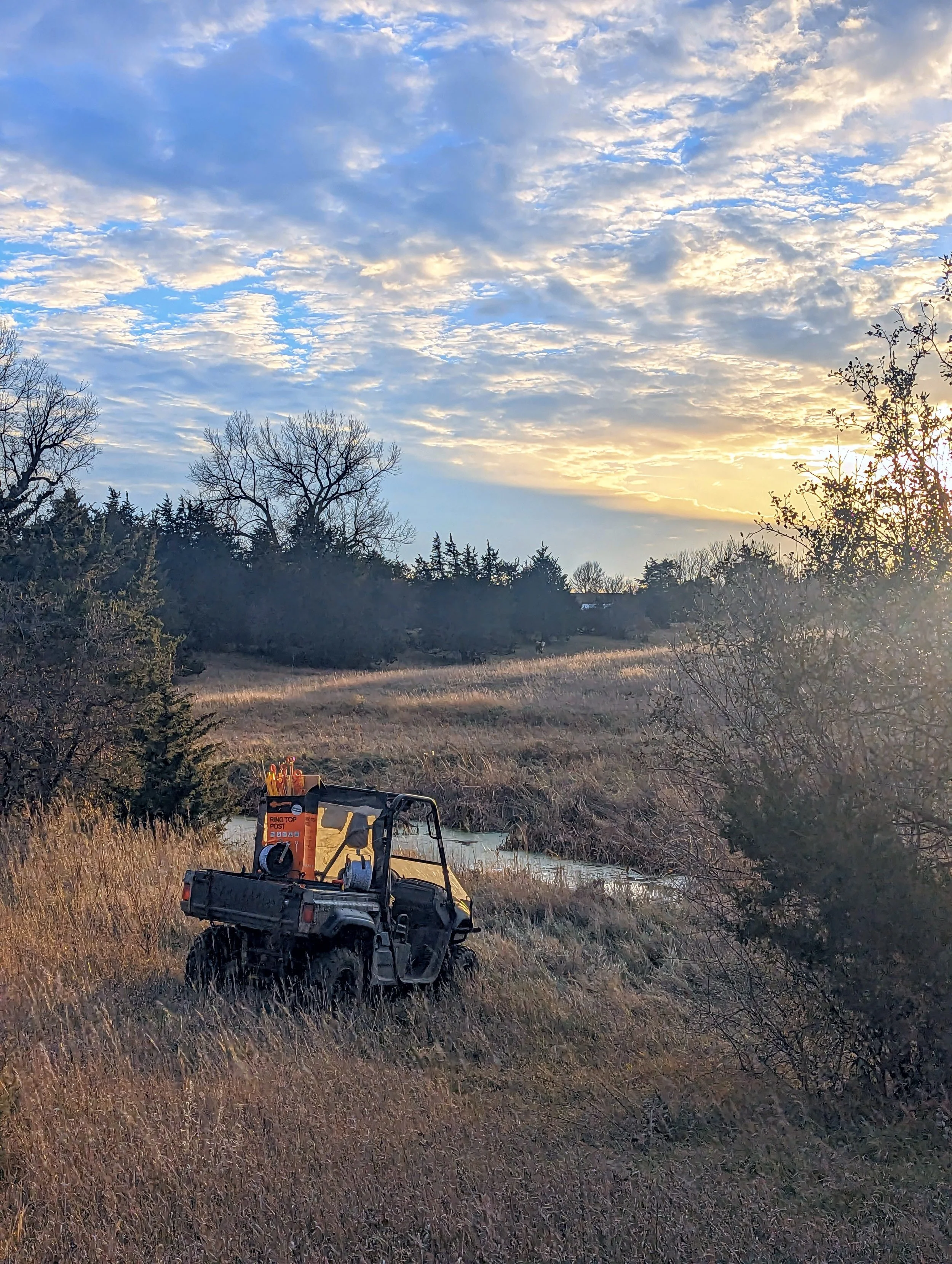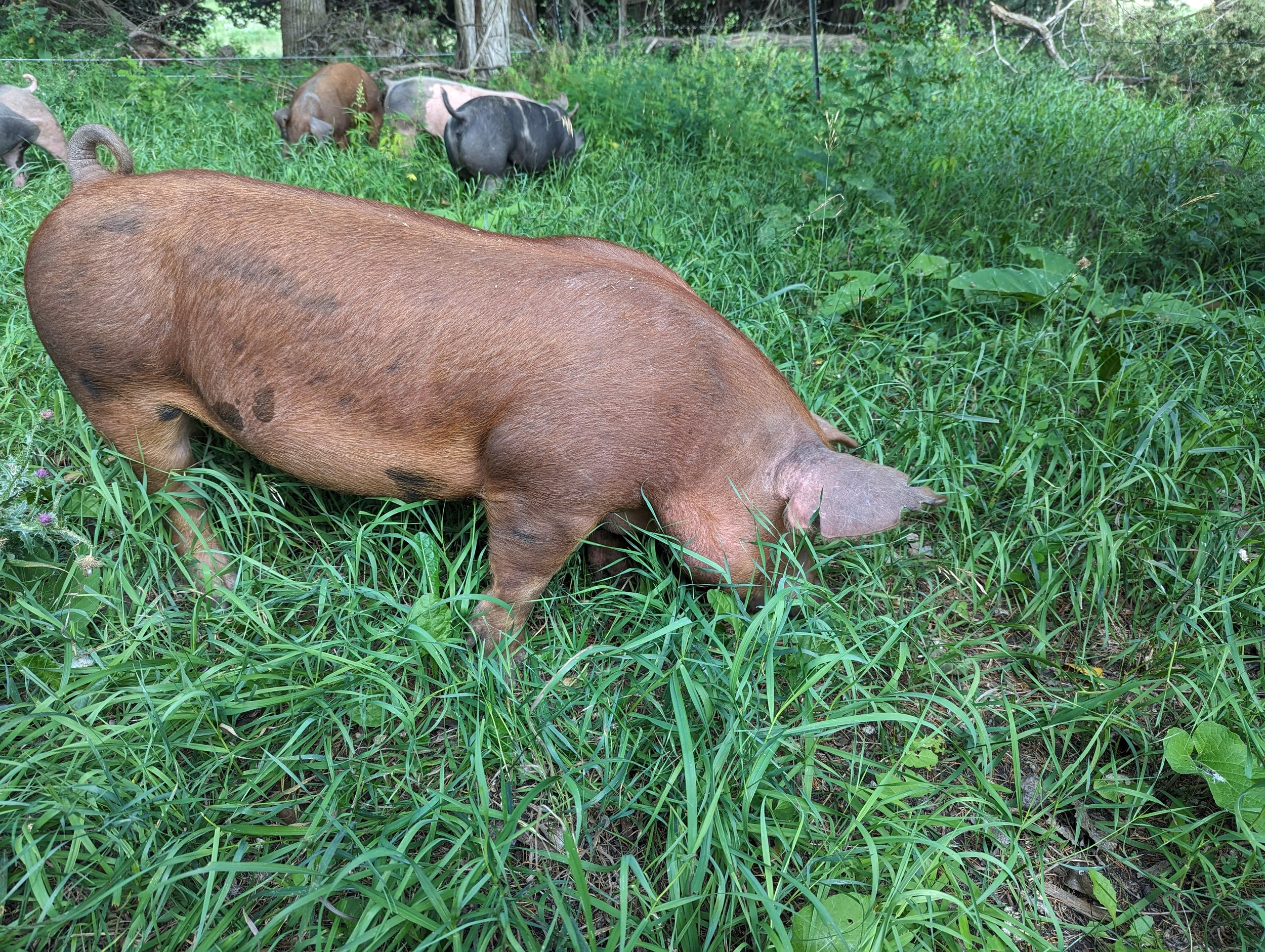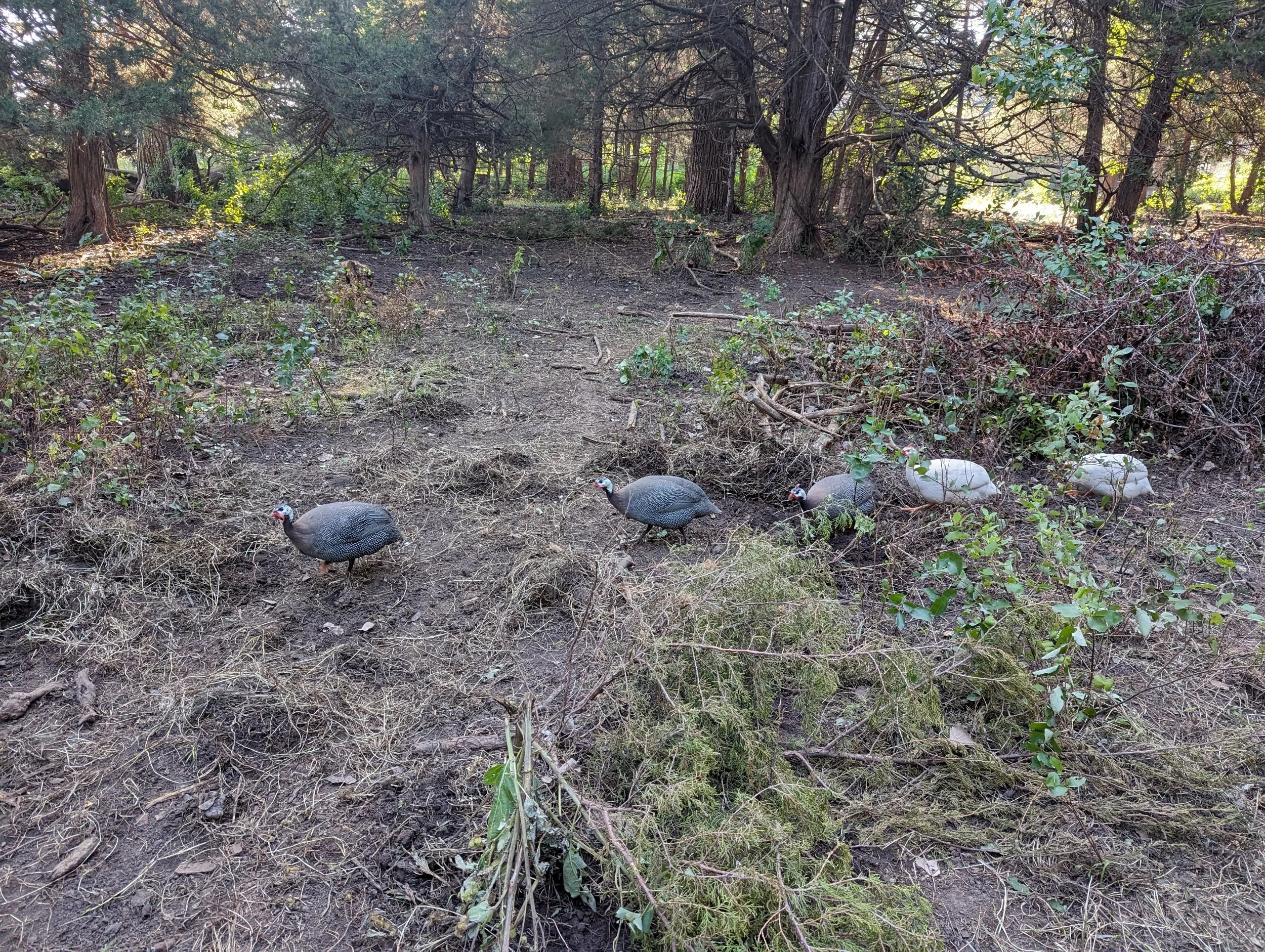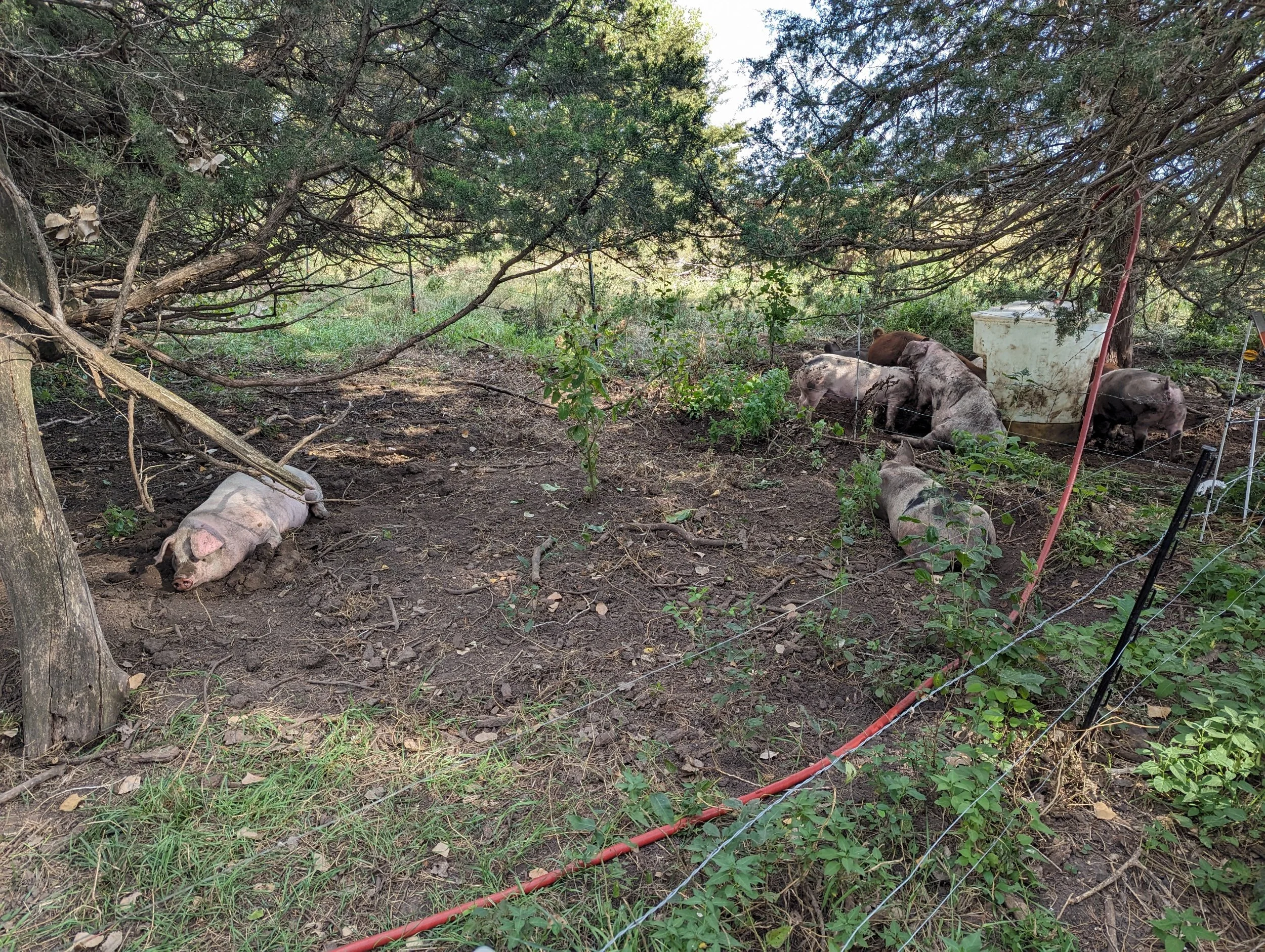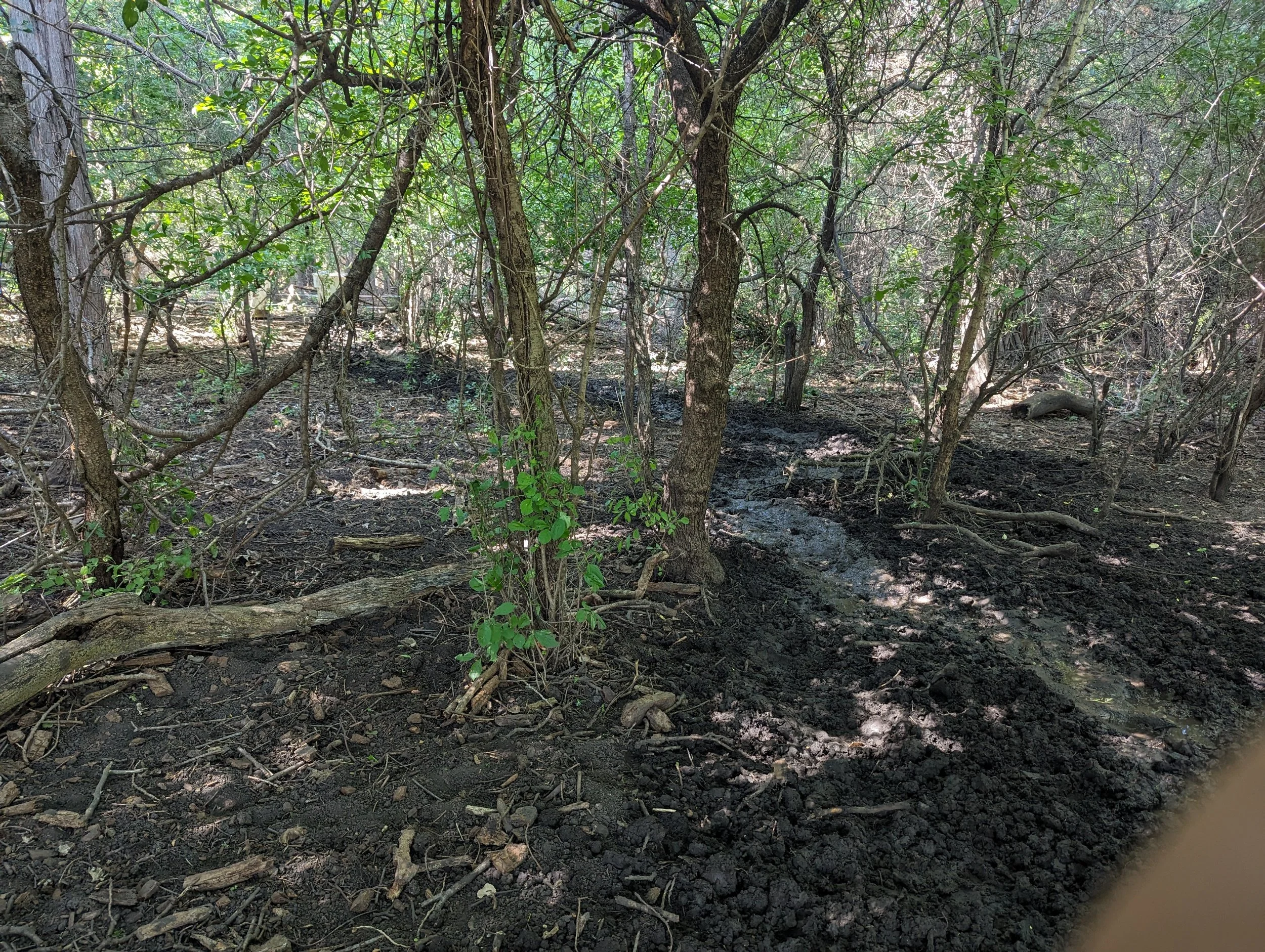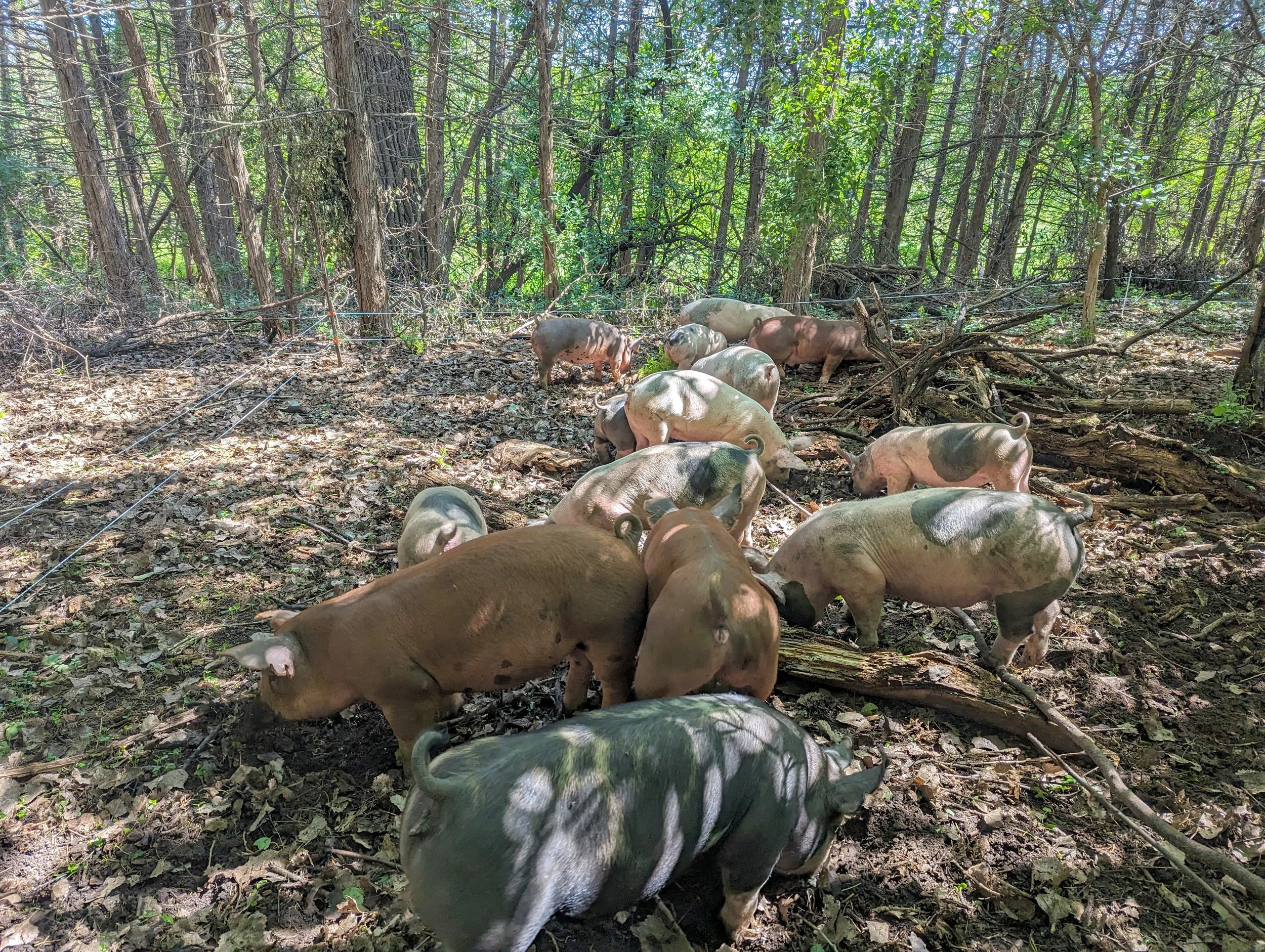Ruminations 24-04: Pastured Pork Commentary 4
If you stuck with me this long, you know about the video. This is the final major point made before a less pointed discussion was made about hogs and hog barns in general that encompass all the points then some. If you have read through the last 3 weeks’ discussions, THANK YOU! Whether you agree with what I am doing or with what folks at This’ll Do Farms/Barn Talk do, isn’t the point. It’s having these deep dive discussions and learning the how’s and why’s to help each other farm better. With that lets discuss the fourth topic: Weather
#4 Weather and Limited
Production Window
It is hard to refute his claim that here in the Midwest we are weather limited to half the year for outdoor production, especially with hogs. This is again a very true statement. There is a reason I only raise animals from about May to November each year. I don’t have the facilities or equipment to produce during the winter months. This ultimately limits the number of animals I can raise and makes the winter months lean in cashflow. Compared to confinement operations, my method does not compute or appear to be profitable at all, when looking at simply pounds of pork produced or $/day generated.
All that said, what is the true cost of raising hogs in confinement all year round? I am not talking about money for costs, I am talking about all the additional costs not on the balance sheet. by producing 2 times the amount of pork, because you operate all 12 months instead of 6, you generate 2 times the manure and require 2 times the feed and water. That’s twice the compaction on soils, twice the monoculture farmland, twice the water not recharging in the aquifer.
Without belaboring the point further, I would just pose this question: Does the value of an extended growing season justify the environmental and production costs to do so? If the answer is yes, more power to you. For me and my farm, it is a staunch no. Regenerating the land so it can take care of me, my family, and our customer base, is more important than the additional revenue… and costs.
If you have made it this far, I want to say thank you again. I will have one more discussion on this topic to tie it all up next week!
Ruminations 24-03: Pastured Pork: Commentary 3
This is the third installment of my commentary on pastured pork, addressing a video posted by the folks at This’ll Do Farm and the Barn Talk Podcast. I discussed and addressed Skin Sensitivity and Erosion in the previous two installments on this topic.
Before we dive into this, I wanted to make clear: I am not knocking these guys for what or how they are farming. I find their discussions and reasoning very interesting and think they actually do a great job farming and communicating with their listeners about the hows and whys, especially regarding their animal care. These blogs are more to show the nuance of what they said versus what I am doing on Toomey Farms to mitigate their real and true concerns. With that lets root into their third point: Parasites.
#3: Parasites on Pasture
The first thing I want to address is what a parasite actually is and specifically how they affect livestock. A parasite is an organism that infects a host and feeds off that host without killing the host. This leads to decreased animal performance and can limit fertility for breeding stock. Most of the agronomically important parasites are gut associated and reproduce in the host animal which then sheds the parasite’s eggs in their fecal material. These eggs then hatch, grow in the nutrient rich environment (dung pile) and when the time is right, 10-25 days depending on the critter, the microscopic young travel a few inches unto the food source of the host animal, which reinfects them and starts the cycle over.
Now that we are clear what a parasite is and how they function, I want to start this discussion by saying, unmanaged and unmoved animals will always have a high parasite load. This does not matter if we are talking about hogs, cattle, sheep, alpacas, humans or newts. If a lot of one type of animal is left in the same spot they defecate in day after day, they will have a high parasite load.
Fresh Pasture is a
Parasite Free Pasture
My hogs do not get any medication once they get on farm. The breeder goes through their vaccination protocol for ownership transfer, but that is it. I utilize management to keep parasites down in my sounder. By giving them fresh pasture every 3-7 days and allowing at least 30 days between grazes, I can eliminate the need for additional parasite control. Any bugs they may have had will have to survive a rather hostile environment outside the host for 30 days AND have to be ingested by a host in order to reinfect an animal. With my hogs, I try to not go back onto the same footprint in the same year, meaning paddock 1 for the hogs is not used by hogs again that year. The whole acreage I use for hogs (1-4 ac/year) rotates yearly. This management creates an environment that prevent parasite load from reaching a point that reinfection is possible. In addition, utilizing these acres for other livestock, such as cattle or chickens, stops parasite cycles in their tracks.
Clean up dinosaurs!
In fact, it is these synergies that make pastured anything superior, in my opinion. I am able to raise more than one livestock species on the same acres in the same year because I am utilizing their biologies to counteract their disease and parasite cycles. By allowing chickens (or guineas in the photo above) to scratch and spread the hog manure about, eating whatever bugs they find, and scattering the rest, we destroy the parasite’s environment. By allowing time for pasture recovery, and moving animals when grass is still high, we create an environment where host animals are not having to eat parasites because they are either not present or in such a low load that it is not affecting animal performance.
Come back next week to discuss their fourth and final reason for not raising hogs on pasture: Weather.
Ruminations 24-02: Pastured Pork: Commentary 2
Last week we introduced a video into the Toomey-sphere from the guys at This’ll Do Farm and the Barn Talk Podcast explaining the reasons why hog barns are needed and outdoor hogs are not as great as folks think they are. We discussed skin sensitivity last week. This week lets discuss their second concern: Erosion.
#2: Soil Erosion, Rooting,
and Soil health
Of all the concerns, this is the one I genuinely agree with the most. You can put lipstick on a hog, but they’re still a hog. Those noses are genetically designed as shovels and all their rooting is the reason that pork shoulder is the some of the toughest roasts and meat you can get (which by the way makes them perfect for smoking!). This is where management of the hogs, specifically time on pasture, comes into play.
The above photo was taken the day before a move. You can see the hogs created a pretty nice wallow and bare spot around their waterer, mainly to cool off, also because they’re hogs. Now this rooting ability can create holes and start head cuts and gullies. If I were to leave hogs in this area for the 6 months I had them, I would certainly have an erosive mess on my hands. There is a massive difference to “outside hogs” and “pasture raised” hogs. On average I leave my hogs in a pasture for 7 days, then move them. I move them quicker if I need to. The photo below this shows a stream of water from the waterer (they rubbed and bumped the float crooked and it ran constantly for two days) and their wallowing where the water collected below at the base of the hill. They were moved next day.
Waterer leak and hog wallows…
NOW WE’RE FARMING!!
Don’t get me wrong, I was not happy with this situation, but this is where the farm management plan comes into play. The hog pastures in this blog are not having hogs on them again for another 2-5 years. This erosion and rooting will not only have time to heal, but has also woke up the soil biology to stimulate growth.
Below is paddock #1 from 2023. There was nothing in this paddock from June 27th to September 1, roughly 60 days. Any rooting that the hogs did in this paddock was healed by the next use. Again, hogs are not going to be back in this paddock for at least another 3 years.



Another issue that I take to saying hogs outside cause more erosion than inside comes from the mitigation of resource concerns caused by confinement hogs. All that manure goes somewhere. Utilizing animal manure as a fertilizer for crops is a practice as old as time. The scale of the scat removal is what have changed.
Forget about water contamination or biohazards for a second and just focus on soil erosion and health. Most hog barns knife their waste products into the soil before the ground freezes. This method of manure spreading involves injecting the manure slurry in the ground between creasers that cut open and seal up the soil. Overall not a bad concept. Last year, my 15 hogs were on a total of 1.5 acres of land. One hog barn could be knifing manure on 100’s if not 1000’s of acres of cropland. The issue comes a year or two later (or every year at the entrance to a field) where the farmer has to deep rip or conduct several passes of tillage to mitigate the compaction caused by driving all the manure all over the place. Now I would ask the question to you: Does a .02 ac wallow, water leak, or rooting patch, every 2-5 years erode more soil than tillage on lets call it 100 acres every other year? (I’m specifically looking at tillage to release the compaction of soils here.) You be the judge.
Next week I will take a look at topic number 3 from the video: Parasites.
Ruminations 24-01: Pastured Pork: Commentary 1
Recently, I came across a video on Facebook that I felt the need to address. Here is the video from This’ll Do Farm and the guys from the Barn Talk podcast. Now full disclosure: I personally like these guys, disagree with a lot of their takes, but genuinely like them and their discussions. I feel they give you a better feel for the food system in the US from the producer perspective than another podcast I have found. Typically, we farmers in the regenerative space get boxed in being out of the box that we forget there is a box 90% of the producers in the US work in. This podcast gives a great and open perspective into that world. I disagree with a lot of what they say, but I also agree with the reasoning they have and cannot fault them for that. In fact you’ll see in the commentary, I actually agree with them on several of their points in the video, but not enough to build a hog barn.
I am going to do this is in five (5) different posts to address the 4 main reasons why raising hogs inside is better than outside. Towards the end of the video he has a few points that I will address that tie back to those 4 and farming and production as a whole.
That said, lets get hog wild…
#1: Sensitive Skin and Outdoor Hogs
This first issue brought up is hog skin sensitivity. In 3 years of raising hogs, sunburn has rarely been a concern of mine. This is mostly due to utilizing pasture acres that have dense red cedar and buckthorn growth and using the hogs to help wake the soil back up and rough up the weaker and younger trees. That being said, there is an issue with hog color that I have noticed.
Last year, we had berk/hamp crosses (white with black splotches) berk/duroc crosses (reds) and berk/landrace crosses (all whites in my sounder). The white skinned hogs did get a sunburn and did scratch more because of it. The reds and blacks? They were my best gainers and pretty bullet proof. You don’t need pink pigs. This year I am trying very hard to get all berk/durocs for this reason. But to say that sunburn is a big reason to move them indoors is looney.
Hogs of many shades being
Hogs in the shade
This also goes for folks that “need” shade structures or shelterbelts for their black cows to help them in the heat. I have an easy solution, red cows… but I digress.
Moral of the story, the stock animal can change to meet your needs. My hog needs are currently changing as I target in on the animal that best fits my system, sunburn be damned.
Next week we will check out concern #2: Erosion, Rooting and Soil Health.


